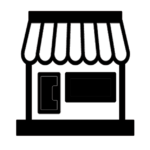Pricing Your Items
- Posted on
-
 Posted by:
Thrift Boutiques
Posted by:
Thrift Boutiques - 0 comments
- Categories: How To Maximize Your Sales, Pricing Your Items

Pricing Your Items
Pricing used clothing items and accessories can be tricky because it largely depends on the item’s condition, brand, and desirability. Some brands hold their value well, while others may not. Items in excellent condition may command a higher price than those with visible wear and tear. To solve this mystery, it’s essential to do some research on the brand and item before pricing. Checking similar items currently for sale online can give an idea of the going rate. Additionally, considering any unique features or popular trends can also affect the price. Ultimately, it’s important to be fair and reasonable in pricing, while also taking into account the effort put into finding and selling the item.
1. Research:
Check prices of similar items in the same condition, brand, and size. Look at websites, apps, or stores that specialize in second-hand clothing. Thrift Boutique’s Monthly & Yearly Featured Membership program offers assistance in pricing items.
2. Condition:
Evaluate the item’s wear and tear. Check for stains, holes, or damages that may affect the sale of your item. Items must be repaired if possible! Think about adding cute patches or embellishments to make your clothing unique and more desirable.
3. Brand:
Recognizable brands or high-end labels are often more valuable, but lower quality or less-known brands may still be desirable for certain buyers. For high-end items keep receipts, authenticity certificates, and ideally the original packaging. If the luxury item has serial numbers or date codes, it is important to add these pictures to your posting. It is typically the seller’s responsibility to provide proof of authenticity.
4. Demand:
Consider the popularity and demand for the item. Seasonality affects pricing as well as current fashion trends.
5. Age:
Items that are worn-out due to age might not hold much value, unless they are in style. One the other hand, vintage clothing and accessories in good quality can be hot ticket items. Do your research!
6. Set a price:
All these factors should be taken into account when setting the price. A fair price would be based on the item’s condition, demand, age, and brand.
7. Be flexible:
If there is no immediate interest in the item, consider lowering the price or offering a discount to entice potential buyers. TB’s platform supports boutiques creating their own coupons within their shops and highlights items on sale.
8. Don’t forget shipping:
Consider the cost of shipping when selling online, and factor that into your pricing strategy. On the TB platform boutiques choose how shipping costs are calculated: split, customer, or offer free shipping.


